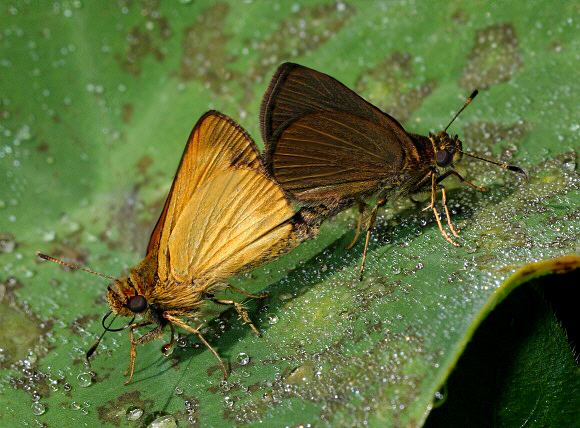
Introduction
There are at least 1038 different species of Grass Skippers found in the neotropical region. Many are a very plain dark brown or fuscous colour, while others are marked with orange streaks and blotches on a dark brown ground colour.
All members of the subfamily Hesperiinae are sexually dimorphic – males being distinguished by the presence of a dark streak of androconial scales on the upperside of the forewing. In Anthoptus the dimorphism is extreme – males are very dark chocolate in colour, while females are marked with streaks and patches of golden-orange.
The genus Anthoptus comprises of 5 known species, of which epictetus is the commonest and most widespread, being found from Mexico to Peru and Brazil.
Habitats
This species can be found in almost any grassy habitat including riverbanks, forest glades, edges and clearings, fields, pastures and roadsides, at altitudes between sea level and at least 800m.

Lifecycle
To be completed.
Adult behaviour
The butterflies are very active in sunshine, but can often be found at rest during overcast weather, or very early in the day, when they sit on herbage with wings held in the typical Hesperiine posture.
